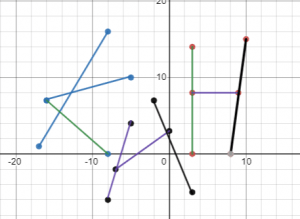During the last week of math 10 I spent most of the time studying for the last exam but one thing that I had to refresh my memory about was factoring. I hadn’t done it in a while so I didn’t remeber much but luckiy I was able to go back in the workbook and relearn it. When you are factoring it’s really important that you remember the 1 2 3 rule because that will save you a lot of time. The 1 2 3 rule is to check how to factor it, 1 is there anything in common, 2 is it a binomial and a difference of squares and 3 is there three terms written as , x and then a number. You don’t have to do all 3 for one question though, you just need to use the one that fits. Here’s an example:

Let’s say the question is + 10x + 24 and you need to factor. using the 1 2 3 methode we can see that hey don’t all have something in common so we can’t use 1. Going to 2 we can see that it isn’t binomial nor is it a difference of squares so in this case we need to use the third. 3 works because it is a trinomial written in the correct format. So because of that essentially all we need to do is find 2 numbers that add up to 10 and when multiplyed it gives us 24. First is finding all the equations that when multiplyed it equals 24. So that’s 1 and 24, 2 and 12, 3 and 8, 4 and 6. next step is finding which one off that list gives us 10 when added together. We can obviously see that it’s 4 and 6 so luckily it isn’t going to be that difficult. And finally to write it we would do ( x + 4 ) ( x + 6 ) and that’s our final answer.










